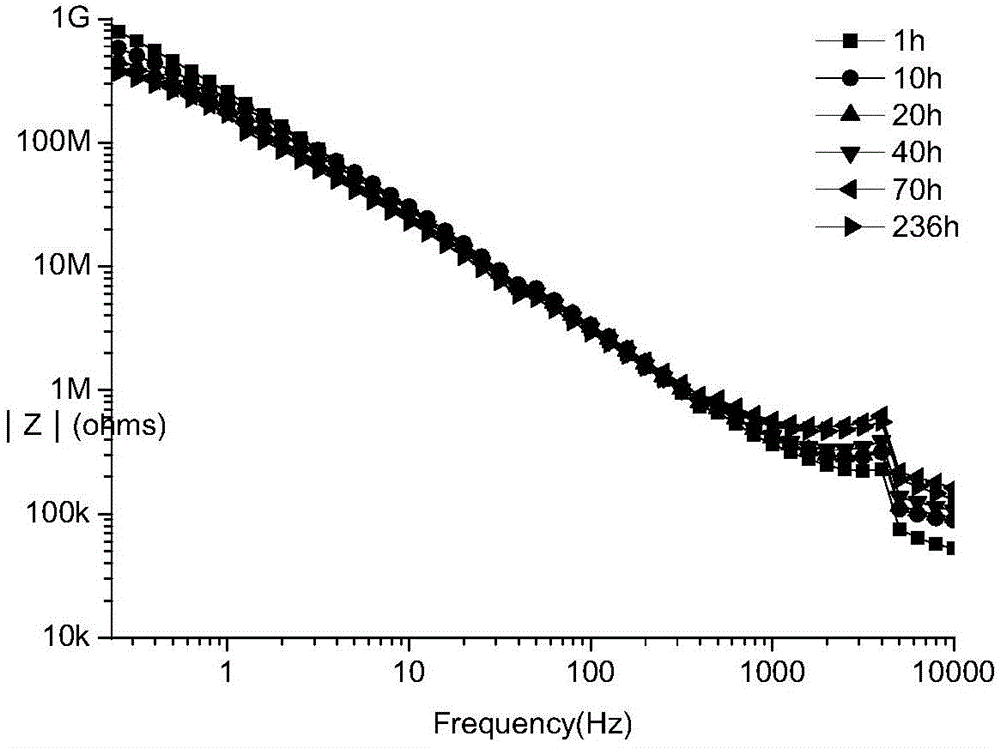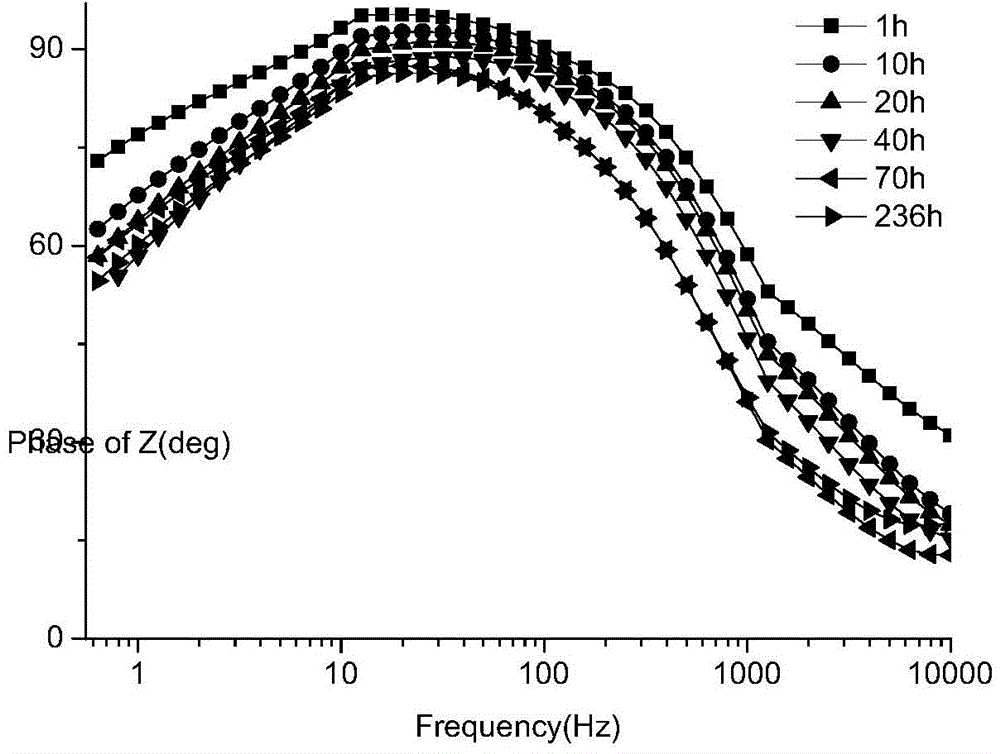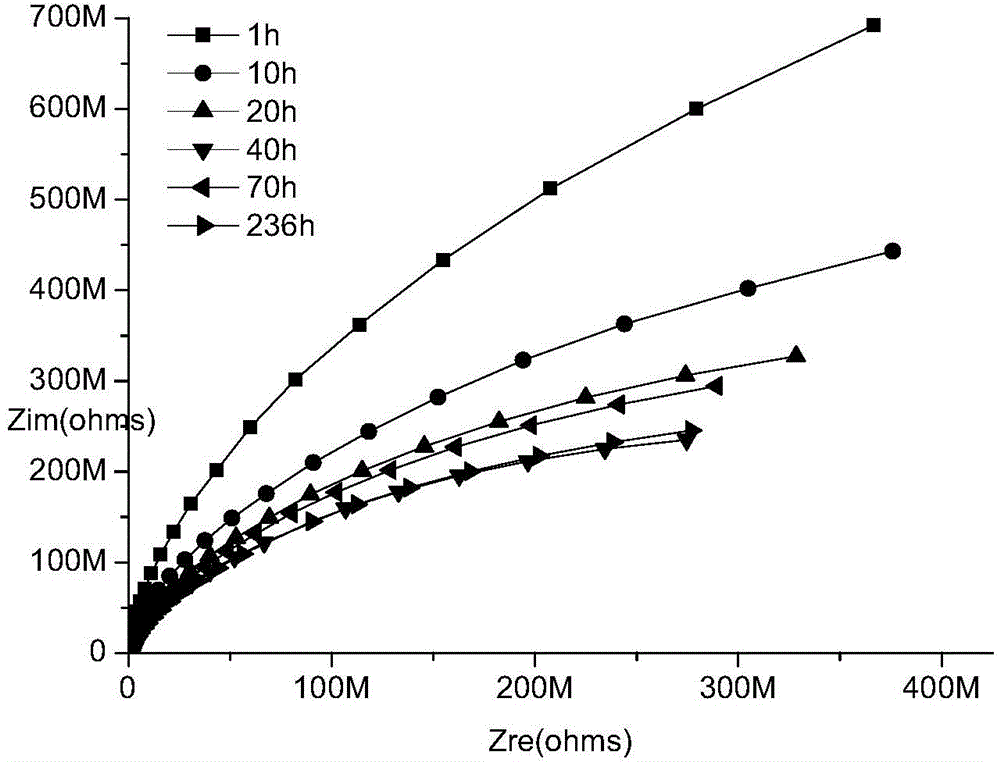Graphene-containing metal surface treatment agent and preparation method of anti-corrosion coating
A technology of metal surface treatment and graphene, applied in the direction of surface coating liquid devices, coatings, anti-corrosion coatings, etc., can solve the problems of poor corrosion resistance, corrosion under the film, etc., and achieve longer penetration time and better binding force Effect
- Summary
- Abstract
- Description
- Claims
- Application Information
AI Technical Summary
Problems solved by technology
Method used
Image
Examples
Embodiment 1
[0027] Firstly, dilute the silane coupling agent with a mass fraction of 5% of the solute plus deionized water to form an aqueous dispersion of the silane coupling agent with a concentration not exceeding 20%.
[0028] Then, the aqueous dispersion of the silane coupling agent is added into the water-based resin for uniform mixing to form a mixed solution. The water-based resin is water-based polyurethane and water-based acrylic resin, wherein the polyurethane in the water-based polyurethane accounts for 64.95% of the solute mass fraction, and the acrylic resin in the water-based acrylic resin accounts for 30% of the solute mass fraction.
[0029] The expanded graphite is oxidized to graphite oxide by improving the Hummers method, the graphite oxide is added to deionized water, and the graphene oxide water dispersion is obtained by exfoliating by methods such as magnetic stirring, mechanical vibration or ultrasonic waves.
[0030] 0.05% of the solute mass fraction of graphene o...
Embodiment 2
[0032] Firstly, dilute the silane coupling agent with a mass fraction of 20% of the solute plus deionized water to form an aqueous dispersion of the silane coupling agent with a concentration not exceeding 20%.
[0033] Then, the aqueous dispersion of the silane coupling agent is added into the water-based resin for uniform mixing to form a mixed solution. The water-based resin is water-based polyurethane and water-based acrylic resin, wherein the polyurethane in the water-based polyurethane accounts for 60% of the solute mass fraction, and the acrylic resin in the water-based acrylic resin accounts for 15% of the solute mass fraction.
[0034] The expanded graphite is oxidized to graphite oxide by improving the Hummers method, the graphite oxide is added to deionized water, and the graphene oxide water dispersion is obtained by exfoliating by methods such as magnetic stirring, mechanical vibration or ultrasonic waves.
[0035] 5% graphene oxide aqueous dispersion is added to ...
Embodiment 3
[0037] First, dilute the silane coupling agent with a mass fraction of 39.95% of the solute plus deionized water to form an aqueous dispersion of the silane coupling agent with a concentration not exceeding 20%.
[0038] Then, the aqueous dispersion of the silane coupling agent is added into the water-based resin for uniform mixing to form a mixed solution. The water-based resin is water-based polyurethane and water-based acrylic resin, wherein the polyurethane in the water-based polyurethane accounts for 49.85% of the total solid component mass fraction, and the acrylic resin in the water-based acrylic resin accounts for 10% of the total solid component mass fraction.
[0039] The expanded graphite is oxidized to graphite oxide by improving the Hummers method, the graphite oxide is added to deionized water, and the graphene oxide water dispersion is obtained by exfoliating by methods such as magnetic stirring, mechanical vibration or ultrasonic waves.
[0040] 0.2% of the sol...
PUM
 Login to View More
Login to View More Abstract
Description
Claims
Application Information
 Login to View More
Login to View More - R&D
- Intellectual Property
- Life Sciences
- Materials
- Tech Scout
- Unparalleled Data Quality
- Higher Quality Content
- 60% Fewer Hallucinations
Browse by: Latest US Patents, China's latest patents, Technical Efficacy Thesaurus, Application Domain, Technology Topic, Popular Technical Reports.
© 2025 PatSnap. All rights reserved.Legal|Privacy policy|Modern Slavery Act Transparency Statement|Sitemap|About US| Contact US: help@patsnap.com



